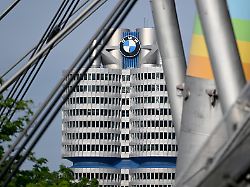High arsenic levels in cobalt mine
BMW in distress because of suppliers in Morocco
November 13, 2023, 1:25 a.m
Listen to article
This audio version was artificially generated. More info | Send feedback
A cobalt mine owned by the Moroccan royal family is causing problems for BMW. Investigative reporters discover arsenic levels in the area that are hundreds of times higher. The operators should also not take the protection of workers too seriously. The car manufacturer needs the raw material for batteries.
BMW says it is trying to clarify the situation following a report on environmental and occupational safety violations at a cobalt mine in Morocco. The company approached the supplier Managem and requested additional information from the company, said a BMW spokesman. “If there is any misconduct, it must be stopped.” The BMW spokesman said the first allegations against Management had already emerged in the summer. At the time, the company provided BMW with documents that looked credible. The mine operator’s environmental certificates are up to date, he added. A request to Managem for a statement initially went unanswered.
The “Süddeutsche Zeitung”, the NDR and the WDR reported that there were serious violations of environmental and occupational safety rules at the mine in Morocco. Significantly elevated arsenic levels were found in water samples. In addition, Managem does not comply with international standards for the protection of workers and takes action against critical unions.
Dried lakes with white residue
Managem is majority owned by the Moroccan royal family and claims to operate a number of mines in several African countries. Cobalt is needed, among other things, for electric car batteries. By far the largest part of the world’s cobalt reserves is in the Congo, where child labor still occurs, particularly in small mines. For this reason, BMW no longer sources cobalt from the Congo, said the BMW spokesman. The people of Munich get around a fifth of their cobalt needs from Morocco; the rest comes from Australia.
According to the reporters, numerous catch basins around the mine may contain arsenic, which is apparently released during the storage and processing of the cobalt with water. What remains are dry lakes with white residue. When it rains heavily, these overflow and flow into a small river that connects the mine with towns in the valley.
